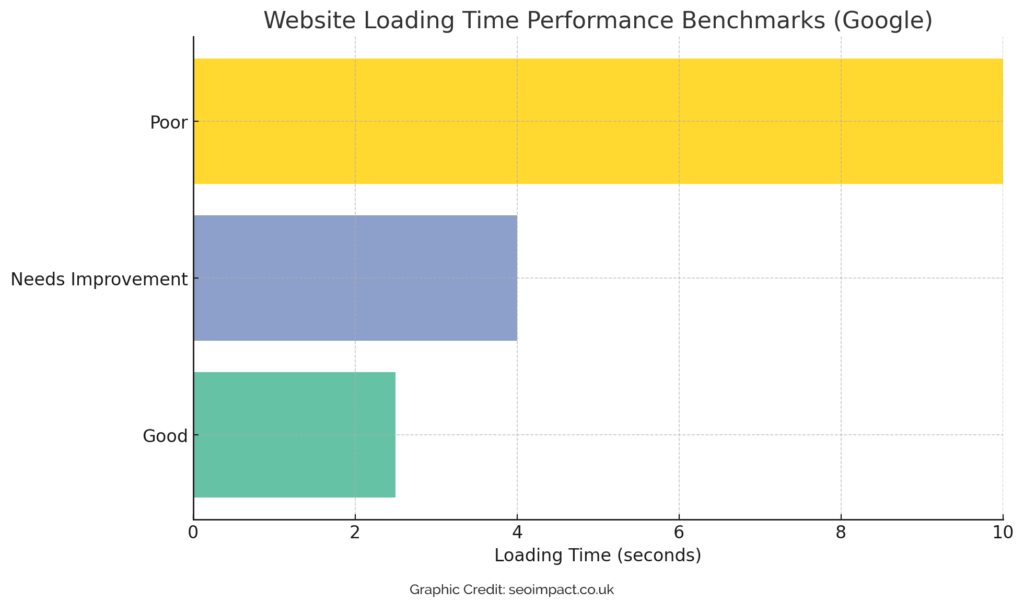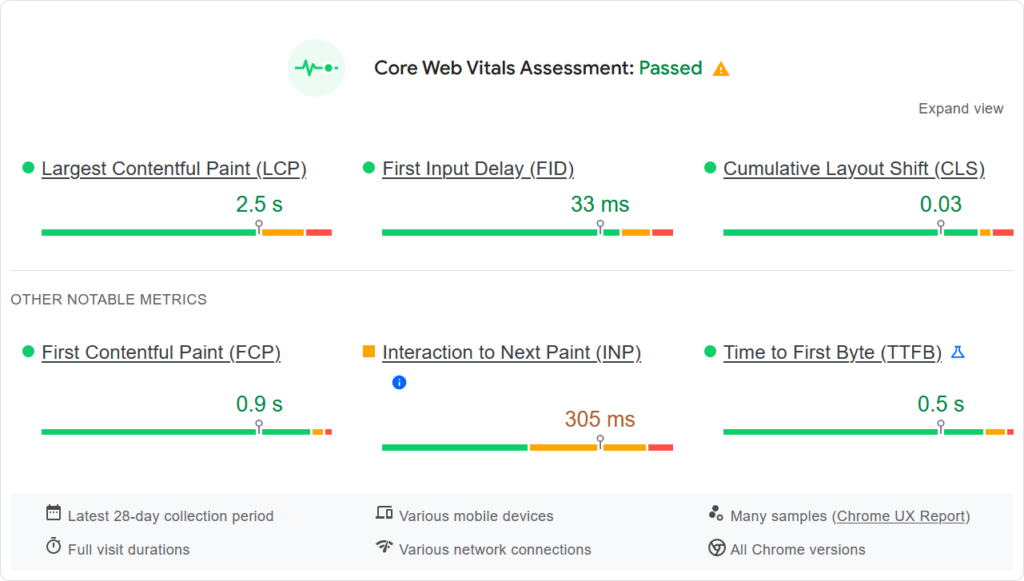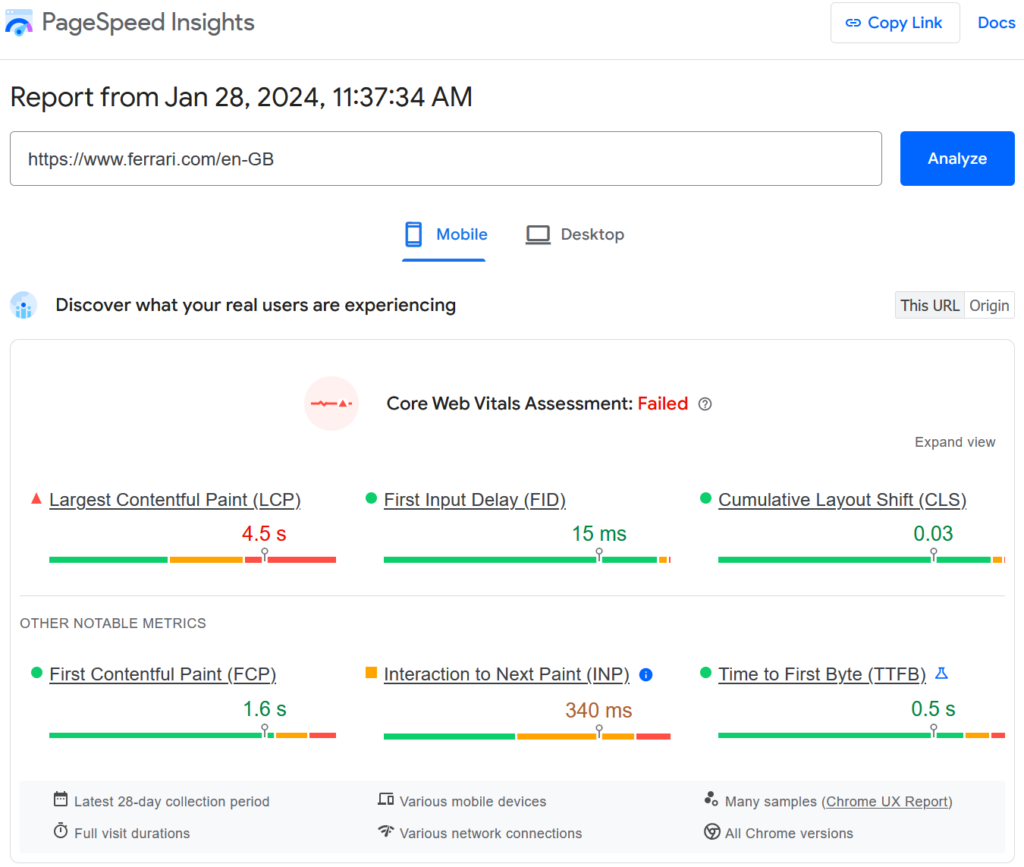What can you achieve in two seconds? Take a deep breath? Perform a squat? Snap a photo? Read this sentence? Most of us probably can’t get much done at all in the space of two seconds.
Yet two seconds is the maximum amount of time we expect a website to load in.
It might sound unreasonable, but we’ve all been there, right?
You’re waiting for what seems like forever for a page to load, and you simply don’t have time for this, so you close the page and move on. It was probably only a handful of seconds, but staring at that blank page is infuriating.
Don’t worry, you’re not spoilt or obnoxious, and you’re certainly not alone. We have been conditioned to expect lightning-fast loading of webpages, and anything that falls short of this isn’t worthy of our attention.
And this is precisely why page performance is so crucial.
What is Page Performance?
When we’re talking about page performance we’re essentially talking about speed.
Page performance is the speed at which a website loads. It’s also referred to as page speed or loading speed. A high-performing website loads quickly, while a low-performing website loads slowly.
But speed is subjective, right?
What you consider to be fast may not be what I consider to be fast.
Well, maybe not.
What’s important here is what Google considers to be fast. The benchmark for a website with a good performance is 2.5 seconds. If you want Google to rate your site as ‘good’, your main content needs to load in a maximum of 2.5 seconds. If it takes between 2.5 and 4 seconds Google will rate the site as ‘needs improvement’. Anything that takes more than 4 seconds to load is considered ‘poor’.

Measure and Improve Page Performance
You can measure the speed of your website using the PageSpeed Insights tool from Google, and this will also give you suggestions on how you can improve your page performance. A score will be given to your URL out of 100, and anything above 80 is considered good.

Is Page Performance Important for SEO?
Page performance is absolutely important for technical SEO, but it shouldn’t be your main priority when optimising a website.
Google uses various signals to determine which results to deliver to its users, and the strongest of these signals is relevance. The relevance of your content and your authority within the area of that content will always see you ranking more highly than a website that isn’t relevant to the user’s request.
However, page performance can play a part in your ranking against competitors. If your website and a competitor’s website both offer the same level of relevance to a user query, but your competitor’s website loads faster, then chances are high that they will rank above you in search engine results.
It’s also worth remembering that page performance is a big part of user experience. Google wants to deliver a good experience to its users, so a fast page speed can help you tick this box.
Pages that load slowly have higher bounce rates, and this is something Google will measure and use as a factor when determining which sites to rank in SERPs. If your page loads slowly and therefore has a high bounce rate, it doesn’t look like a good option for Google to present to its users.
Consequently, improving your page speed can help your website rank higher on search engines.
Benefits of Improving Page Performance
Faster page performance can be beneficial from an SEO point of view, but it’s also important for your visitors, who, after all, are the reason your website exists. A good page performance will help with perception, retention, and conversion.
Brand Perception
Websites that are slow to load not only perform worse in search engines but also risk harming the reputation of their brand in the eyes of users. If a new visitor can’t reach your main content seamlessly, they’re already starting to develop the impression that your website, and your company, is sub-standard.
Even loyal visitors of your site are likely to look elsewhere if the pages become slow to load, and they start to question if your business is going downhill.
If a company can’t even get it’s website to load efficiently, what else aren’t they doing properly? Looks like there are some exceptions to this rule.

Will they deliver my product on time, or be careful with my personal data? What corners are they cutting? A slow-loading site sends the message that your business can’t be relied upon.
Visitor Retention
Users revisit websites where they’ve had a good experience. If you develop a reputation as a website that’s slow to load, user’s aren’t going to keep coming back. Even if a user likes your product or your message, they’ll find something similar from a competitor instead, who has a site that loads efficiently.
User Conversion
The statistics show that bounce rates significantly increase for websites that are slow to load. All of those visitors you are losing due to poor page performance are missed opportunities for conversion. Whether you’re trying to sell products or sign visitors up to your newsletter, no conversion can happen if the visitor has already left the site due to slow loading time.
What Affects Page Speed?
A whole host of factors affect page speed, including, but not limited to:
Hosting
Cheap hosting sites might be attractive initially, but they will cost you in the long run if they can’t keep up with high performance levels. Choose a server that can handle high volumes of traffic and maintain fast loading speeds.
Images
Image files take longer to load on webpages because they are significantly larger than plain text HTML files. For this reason, it’s worth resizing images before you load them onto your site, and limit the amount of images to those that are going to add value to your content.
Read also: Zooming In on Image SEO
Sticking to PNG, JPG and GIF files will also benefit page performance.
Page Weight
The weight of a page is the total size of everything the page encompasses, including text, images, videos, and add-ons. The higher the page weight is, the longer it will take to load. Combat this by simplifying pages and cutting out any unnecessary files.
Wrapping Up
High speed is generally considered to be a good thing. You want a cashier that works quickly so you’re not standing in line for ages at the supermarket.
You want a chef to be efficient so you don’t faint from starvation before your pizza arrives.
And you want your website to load in a super speedy fashion to ensure a good user experience and signal to search engines that your site is worthy of being featured in top SERPs.
There are multiple ways you can improve your website so that it loads more quickly, but if you want an SEO pro to take a look at your site loading issues, get in touch with us today.
- Canonicalization: The Dos and Don’ts of Canonical Tags - May 27, 2024
- On-Page SEO: The Ultimate Guide - May 25, 2024
- The Only WooCommerce SEO Tutorial You Need in 2024 - May 23, 2024